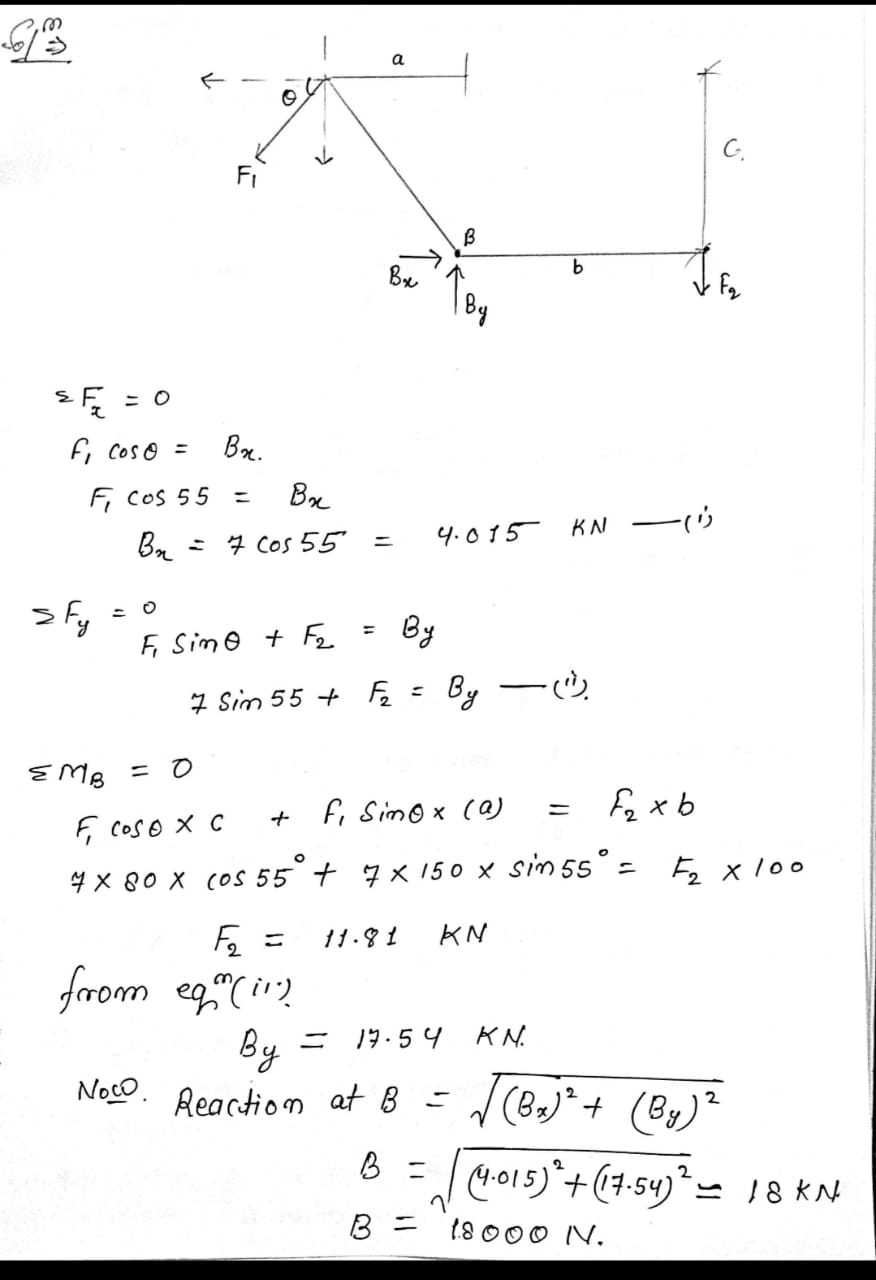The bell-crank mechanism shown in Figure P4.7 is in equilibrium for a load F1 = 7 kN applied at A. Assume that a = 150 mm, b = 100 mm, c = 80 mm, and θ = 55°. The bell crank has a thickness t = 10 mm, and the support bracket has a thickness tb = 8 mm. The pin at B has a diameter d = 12 mm and an ultimate shear strength of 290 MPa. The bell crank and the support bracket each have an ultimate bearing strength of 380 MPa. Determine (a) the factor of safety in pin B with respect to the ultimate shear
The bell-crank
for a load F1 = 7 kN applied at A. Assume that a = 150 mm,
b = 100 mm, c = 80 mm, and θ = 55°. The bell crank has a thickness
t = 10 mm, and the support bracket has a thickness tb = 8 mm. The
pin at B has a diameter d = 12 mm and an ultimate shear strength of
290 MPa. The bell crank and the support bracket each have an ultimate
bearing strength of 380 MPa. Determine
(a) the factor of safety in pin B with respect to the ultimate shear
strength.
(b) the factor of safety of the bell crank at pin B with respect to
the ultimate bearing strength.
(c) the factor of safety in the support bracket with respect to the
ultimate bearing strength.


Trending now
This is a popular solution!
Step by step
Solved in 3 steps with 3 images









